Abstract
The effect of citrate on production of diacetyl and acetoin by four strains each of heterofermentative and homofermentative lactic acid bacteria capable of utilizing citrate was studied. Acetoin was quantitatively the more important compound. The heterofermentative bacteria produced no acetoin or diacetyl in the absence of citrate, and two strains produced traces of acetoin in its presence. Citrate stimulated the growth rate of the heterofermentative lactobacilli. Acidification of all heterofermentative cultures with citric acid resulted in acetoin production. Destruction of accumulated acetoin appeared to coincide with the disappearance of citrate. All homofermentative bacteria produced more acetoin and diacetyl in the presence of citrate than in its absence. Citrate utilization was begun immediately by the streptococci but was delayed until at least the middle of the exponential phase in the case of the lactobacilli.
Full text
PDF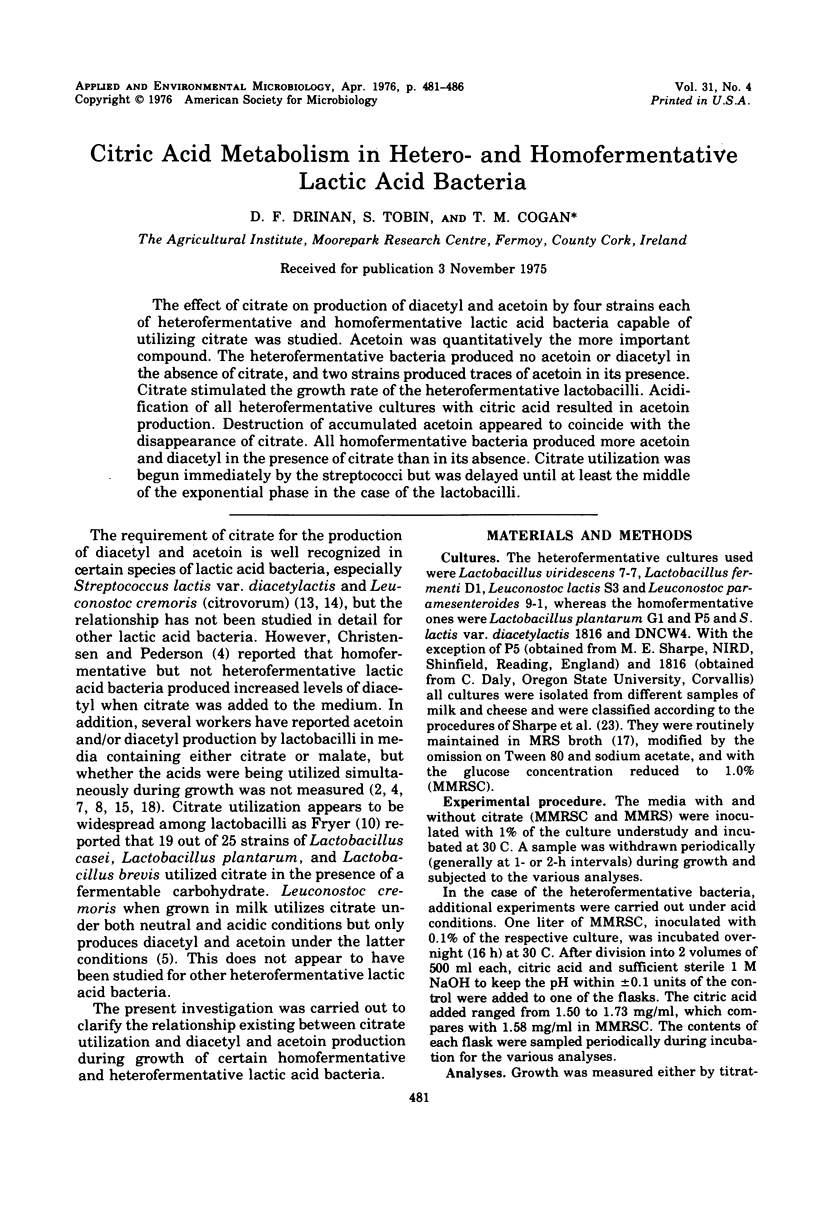
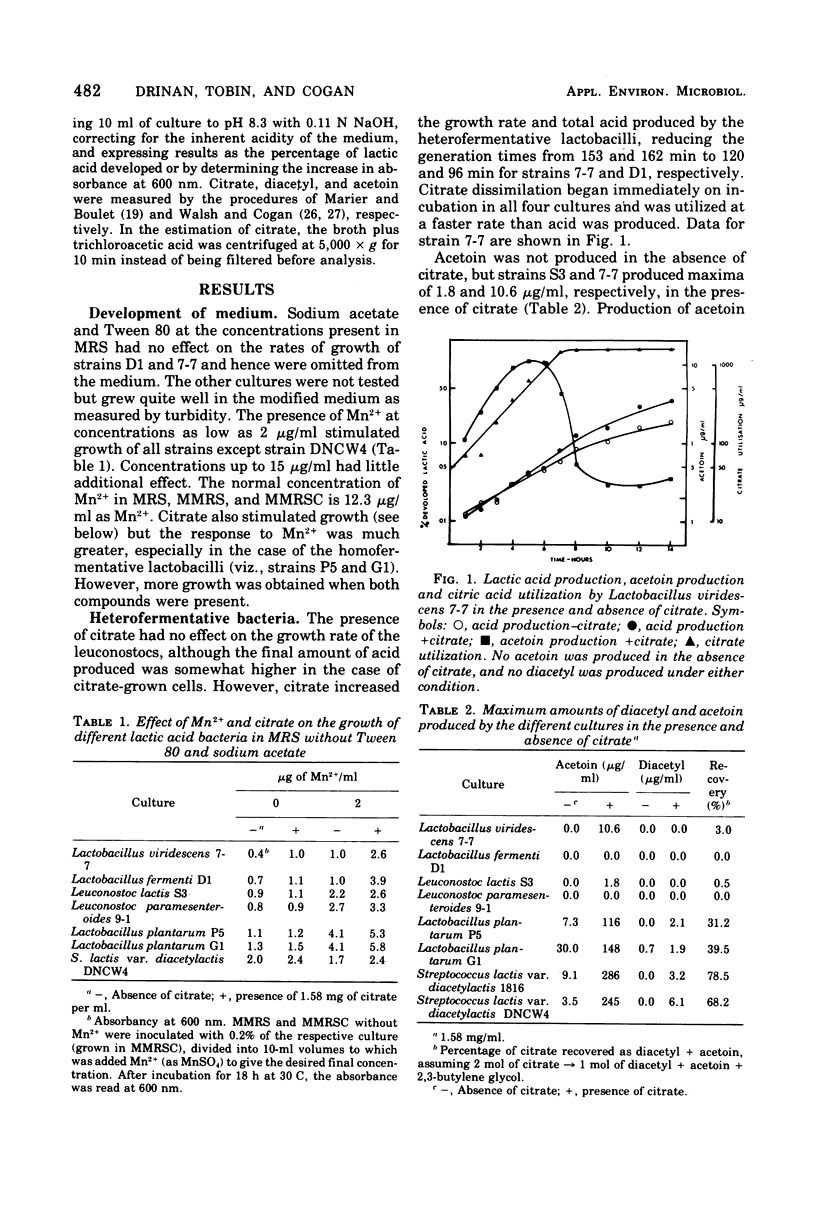
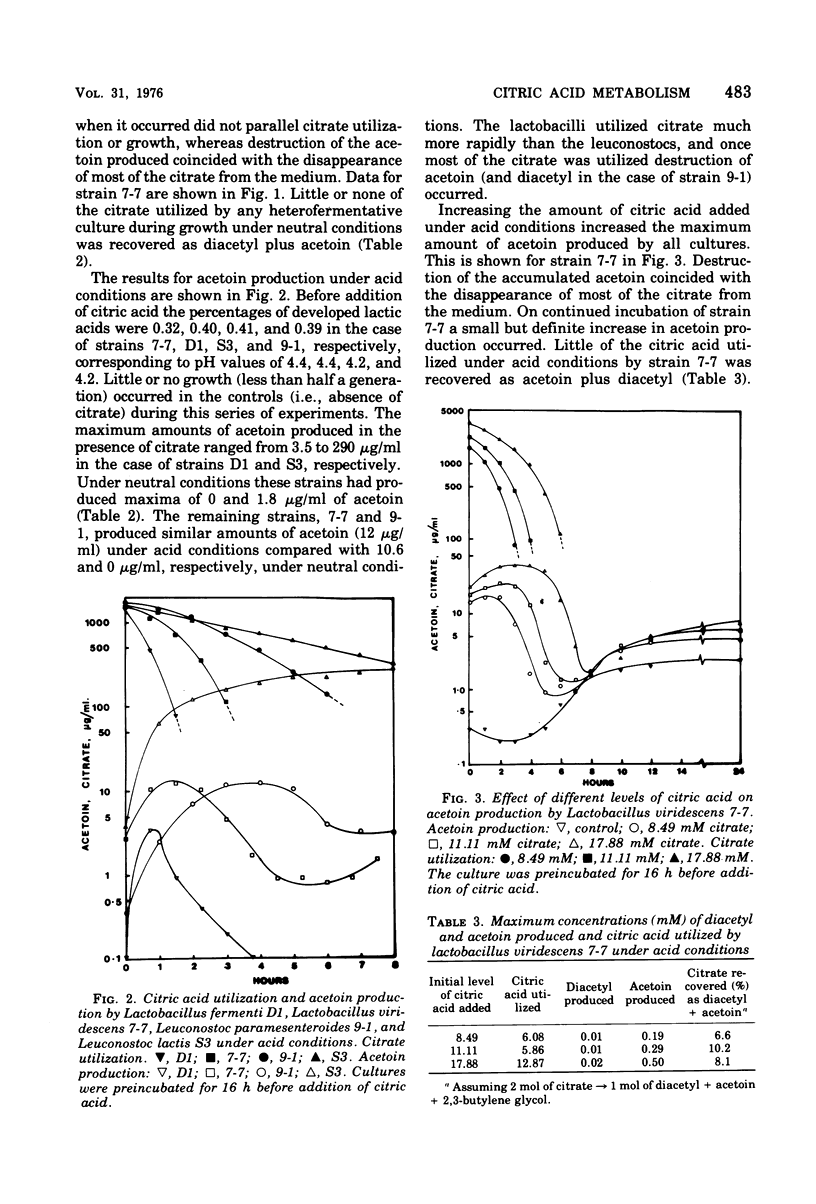
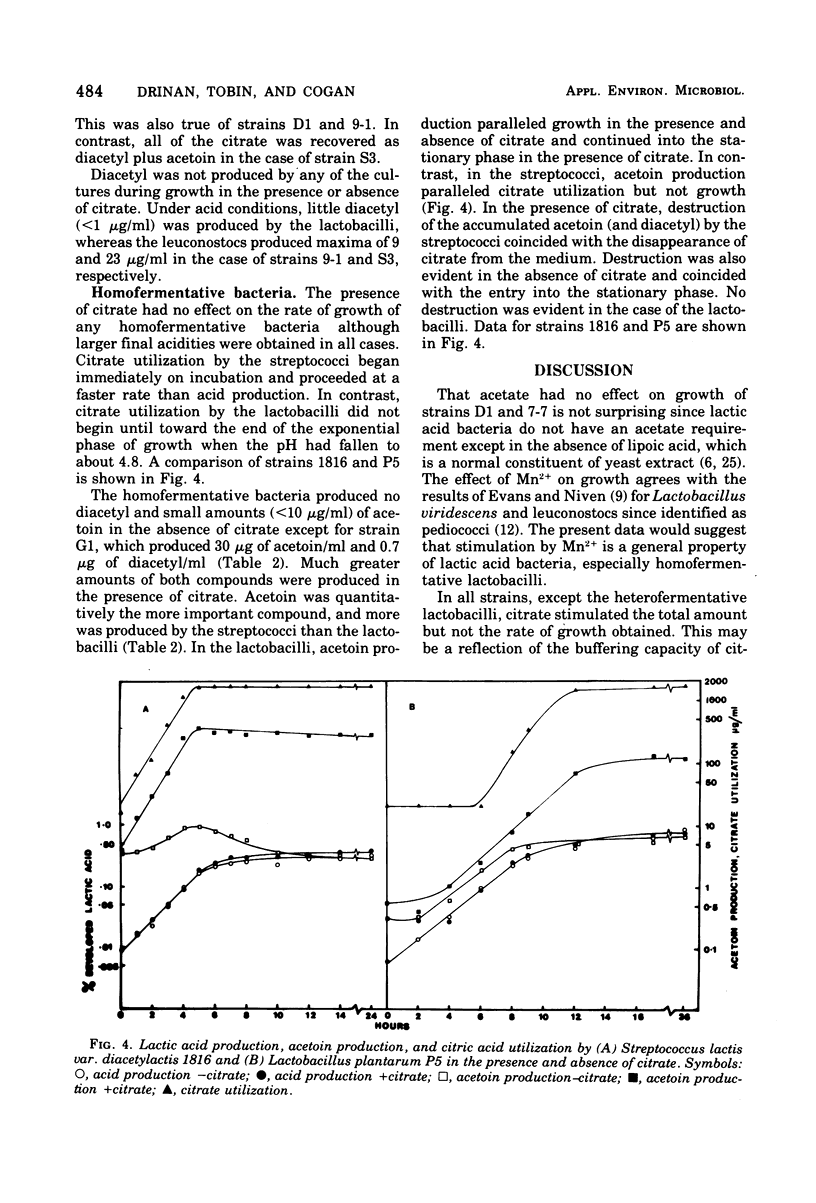
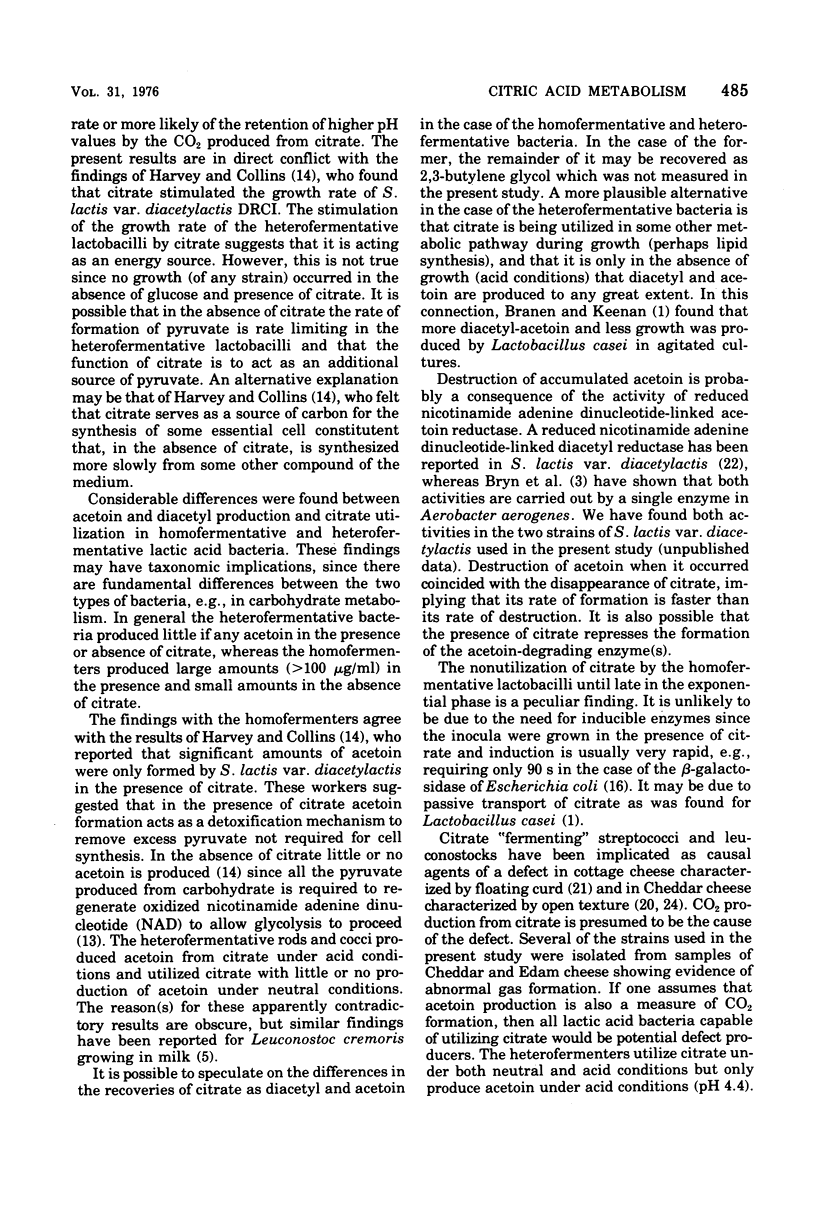
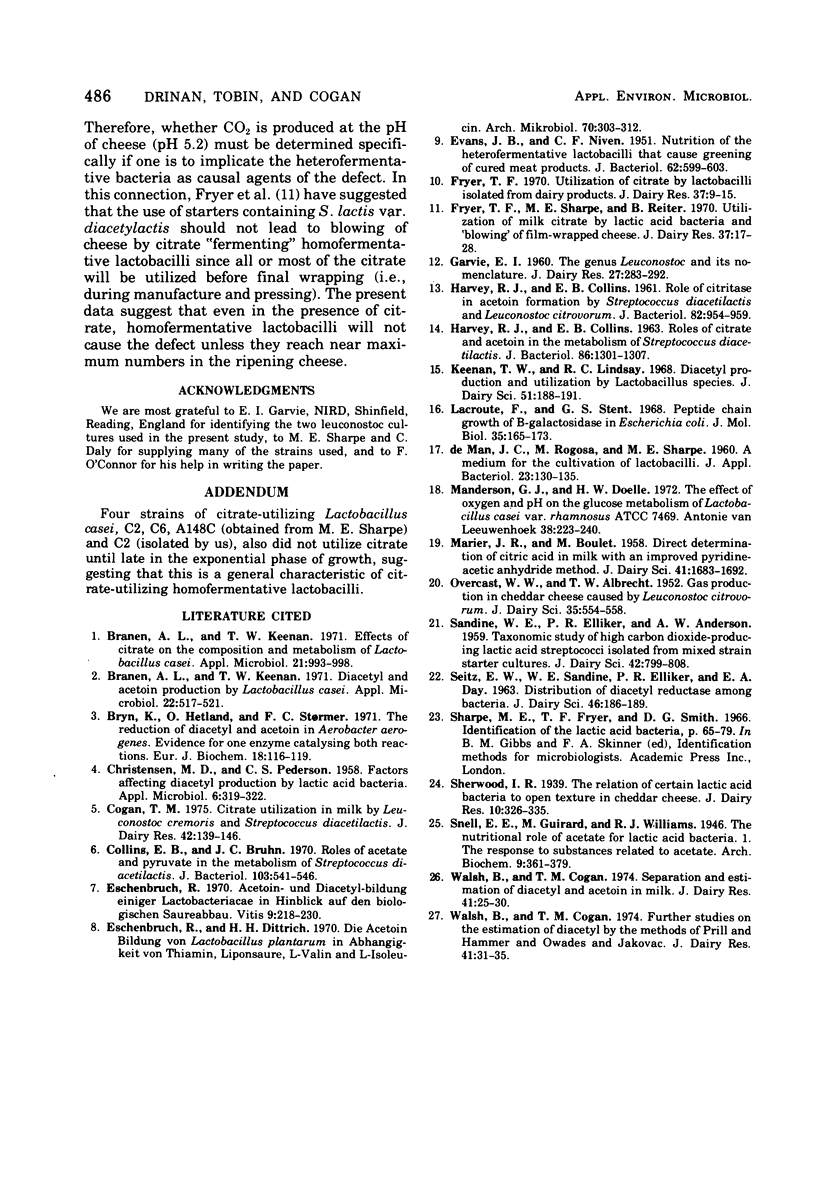
Selected References
These references are in PubMed. This may not be the complete list of references from this article.
- Branen A. L., Keenan T. W. Diacetyl and acetoin production by Lactobacillus casei. Appl Microbiol. 1971 Oct;22(4):517–521. doi: 10.1128/am.22.4.517-521.1971. [DOI] [PMC free article] [PubMed] [Google Scholar]
- Branen A. L., Keenan T. W. Effects of citrate on the composition and metabolism of Lactobacillus casei. Appl Microbiol. 1971 Jun;21(6):993–998. doi: 10.1128/am.21.6.993-998.1971. [DOI] [PMC free article] [PubMed] [Google Scholar]
- Bryn K., Hetland O., Stormer F. C. The reduction of diacetyl and acetoin in Aerobacter aerogenes. Evidence for one enzyme catalyzing both reactions. Eur J Biochem. 1971 Jan 1;18(1):116–119. doi: 10.1111/j.1432-1033.1971.tb01221.x. [DOI] [PubMed] [Google Scholar]
- CHRISTENSEN M. D., PEDERSON C. S. Factors affecting diacetyl production by lactic acid bacteria. Appl Microbiol. 1958 Sep;6(5):319–322. doi: 10.1128/am.6.5.319-322.1958. [DOI] [PMC free article] [PubMed] [Google Scholar]
- Cogan T. M. Citrate utilization in milk by Leuconostoc cremoris and Streptococcus diacetilactis. J Dairy Res. 1975 Feb;42(1):139–146. doi: 10.1017/s0022029900015168. [DOI] [PubMed] [Google Scholar]
- Collins E. B., Bruhn J. C. Roles of acetate and pyruvate in the metabolism of Streptococcus diacetilactis. J Bacteriol. 1970 Sep;103(3):541–546. doi: 10.1128/jb.103.3.541-546.1970. [DOI] [PMC free article] [PubMed] [Google Scholar]
- EVANS J. B., NIVEN C. F., Jr Nutrition of the heterofermentative Lactobacilli that cause greening of cured meat products. J Bacteriol. 1951 Nov;62(5):599–603. doi: 10.1128/jb.62.5.599-603.1951. [DOI] [PMC free article] [PubMed] [Google Scholar]
- Eschenbruch R., Dittrich H. H. Die Acetoinbildung von Lactobacillus plantarum in Abhängigkeit von Thiamin, Liponsäure, L-Valin und L-Isoleucin. Arch Mikrobiol. 1970;70(4):303–312. [PubMed] [Google Scholar]
- HARVEY R. J., COLLINS E. B. ROLES OF CITRATE AND ACETOIN IN THE METABOLISM OF STREPTOCOCCUS DIACETILACTIS. J Bacteriol. 1963 Dec;86:1301–1307. doi: 10.1128/jb.86.6.1301-1307.1963. [DOI] [PMC free article] [PubMed] [Google Scholar]
- HARVEY R. J., COLLINS E. B. Role of citritase in acetoin formation by Streptococcus diacetilactis and Leuconostoc citrovorum. J Bacteriol. 1961 Dec;82:954–959. doi: 10.1128/jb.82.6.954-959.1961. [DOI] [PMC free article] [PubMed] [Google Scholar]
- Lacroute F., Stent G. S. Peptide chain growth of -galactosidase in Escherichia coli. J Mol Biol. 1968 Jul 14;35(1):165–173. doi: 10.1016/s0022-2836(68)80044-0. [DOI] [PubMed] [Google Scholar]
- Manderson G. J., Doelle H. W. The effect of oxygen and pH on the glucose metabolism of Lactobacillus casei var. rhamnosus ATCC 7469. Antonie Van Leeuwenhoek. 1972;38(2):223–240. doi: 10.1007/BF02328095. [DOI] [PubMed] [Google Scholar]


